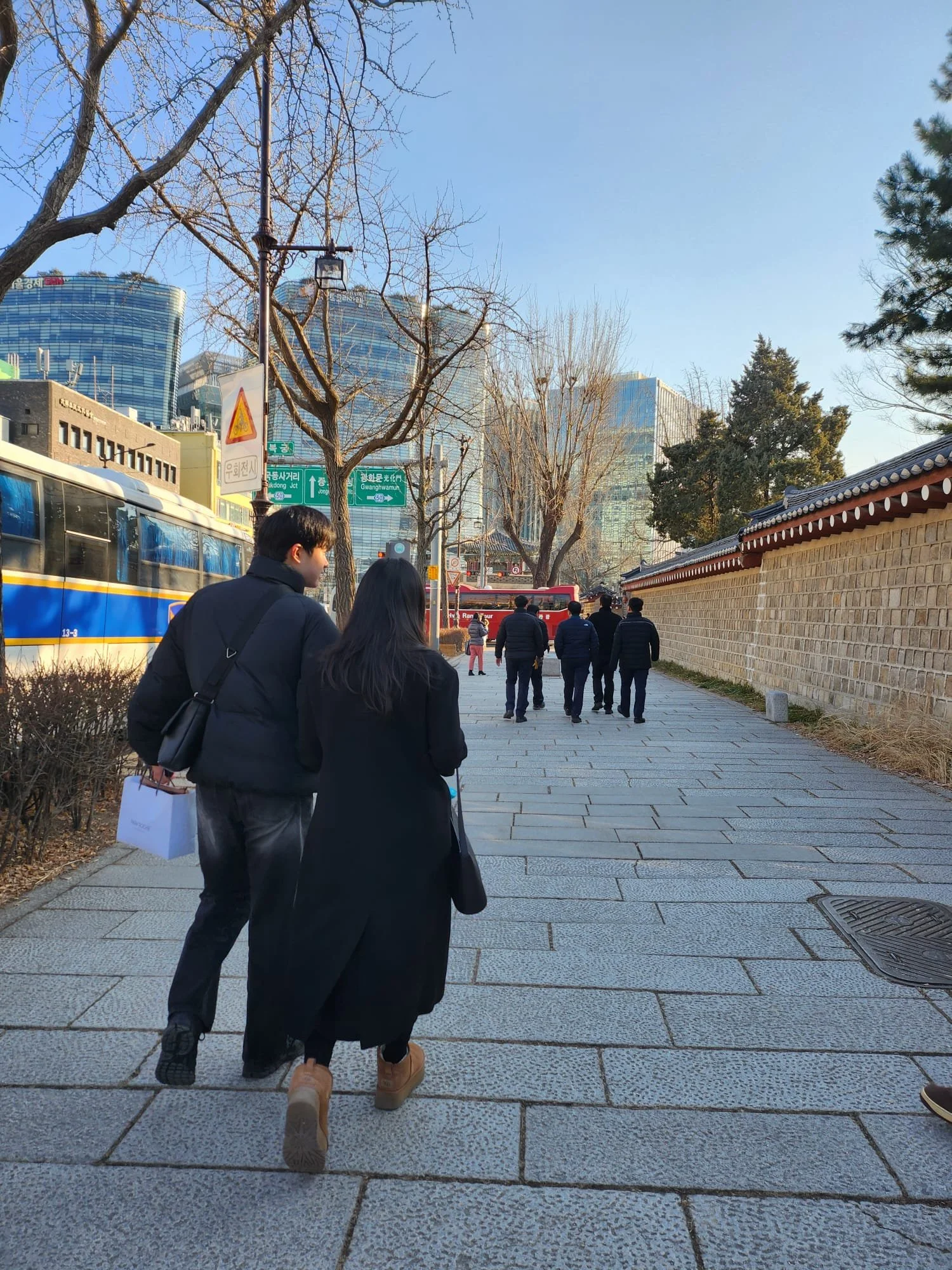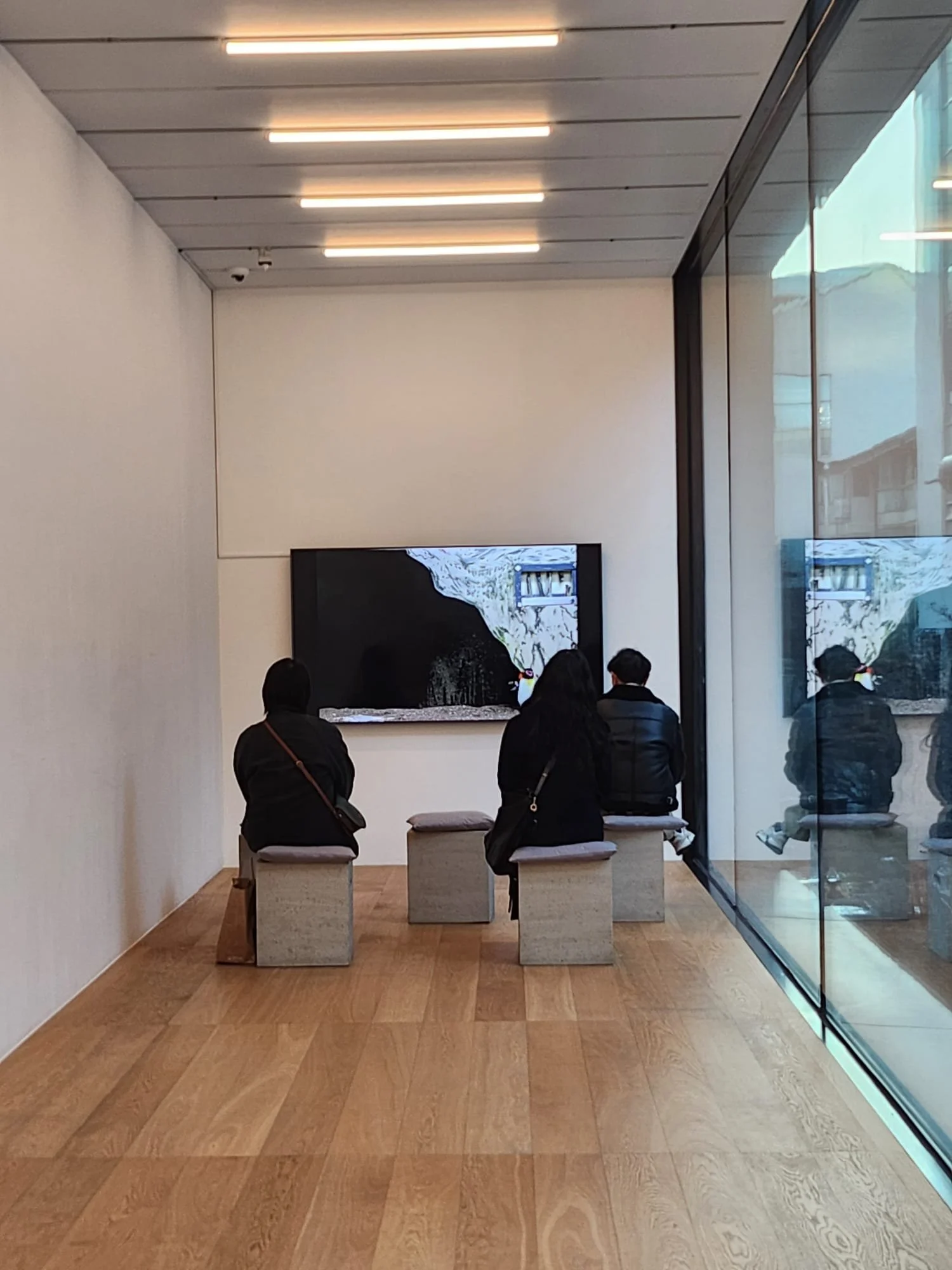Seeing Black
In the depths of Korean winter, one color dominates the streets: black. Black puffers—mostly North Face, with the occasional Eider or Canada Goose—move in unison through subzero winds, creating an almost uniform sea of dark silhouettes. Practical? Absolutely. Black hides kimchi stains and matches everything. But beyond pragmatism, the ubiquity of black in Seoul's winterwear feels almost like an unspoken code, one that camouflages individuals into the collective. Historically, black hasn’t always been synonymous with style. In many cultures, it was the color of mourning—widows in Victorian England wore black for years, while in Korea, mourning clothes were often pale yellow made from coarse hemp or natural linen. 1 In medieval Europe, artists often depicted the devil in black, associating it with fear and the unknown. But by the 20th century, black had been reclaimed—Coco Chanel made black timeless with the little black dress - a symbol of effortless chic, while Japanese avant-garde designers like Yohji Yamamoto and Rei Kawakubo championed black as a radical statement in the 1980s.L to R: Fig 1. Morning ensemble, C. 1870 - 72, Silk crape and mouselline, exhibited at Mourning glory, 2014 at the The Metropolitan Museum of Art Fig. 2 & 3. Mourning Clothes Worn by Yi Hae-sang and His Wife (minor royal descendants of the Joseon Dynasty), 1970 from Korea Heritage Service
In Korea, black's dominance in fashion might be tied to a cultural preference for understated elegance and uniformity. Conformity is a deeply embedded value in Korean society, the collectivist culture in Korea tends to favour harmony over individuality, perhaps the sea of black puffers could be seen as an extension of that mindset. 2 Here, choosing black isn’t just about personal taste or practicality - it aligns with an unspoken social norm. This preference for monochrome minimalism extends beyond fashion, shaping Seoul’s architecture, beauty trends, and even corporate dress codes. K-pop idols are often seen in black at airports , reflecting the same aesthetic. If not black, shades of white, gray or beige will accompany it. The appeal of ‘quiet confidence’ is deeply social. Unlike the loud branding or bold colors associated with luxury in other parts of the world, Korea’s approach to style and status is often more discreet. The concept of 'gentle luxury' has gained traction, where wealth and taste are expressed subtly—through material, fit, and brand recognition that only those ‘in the know’ would notice. This is evident in the Korean designer labels such as Ader Error and Juun.J, which prioritize clean lines, neutral palettes, and refined tailoring over overt logos.L to R: Seoulites in black taken by the author
The idea of quiet confidence also plays into the country’s beauty standards. The preference for a natural, ‘effortless’ look—often seen in dewy skin, minimal makeup, and soft-toned outfits—aligns with the broader aesthetic of controlled restraint. Even in architecture and interior design, Korea’s modern spaces often embrace neutral tones, soft textures, and a sense of balance, creating both luxurious yet understated environments.
Ultimately, the dominance of black—and its accompanying palette of neutrals—isn’t just about fashion; it speaks to a broader cultural philosophy. It’s a way of presenting oneself with refinement, belonging, and a subtle assertion of taste without the need for excess. In a city that moves fast and values efficiency, black offers a timeless, practical, and socially attuned choice—an unspoken uniform of modern Seoul. But as someone new to the city, I couldn’t help but feel the urge to choose something different. It felt unexpectly freeing- or perhaps a subconcious attempt to navigate my place within (or just outside of) this quiet code.
Notes:
1 Kyunghee Pyun and Minjee Kim, Dress History of Korea (London: Bloomsbury Visual Arts, 2023).
(Provides a detailed examination of Korean dress practices and their cultural meanings, offering broader context to the aesthetics of uniformity in Korean fashion.
2 Euny Hong, The Power of Nunchi: The Korean Secret to Happiness and Success (New York: Penguin Books, 2019).
(Hong introduces nunchi as the subtle art of reading social cues and responding appropriately—a cultural skill deeply embedded in Korean society which explains how conformity and collective harmony are prioritized in public spaces and aesthetic choices.)







